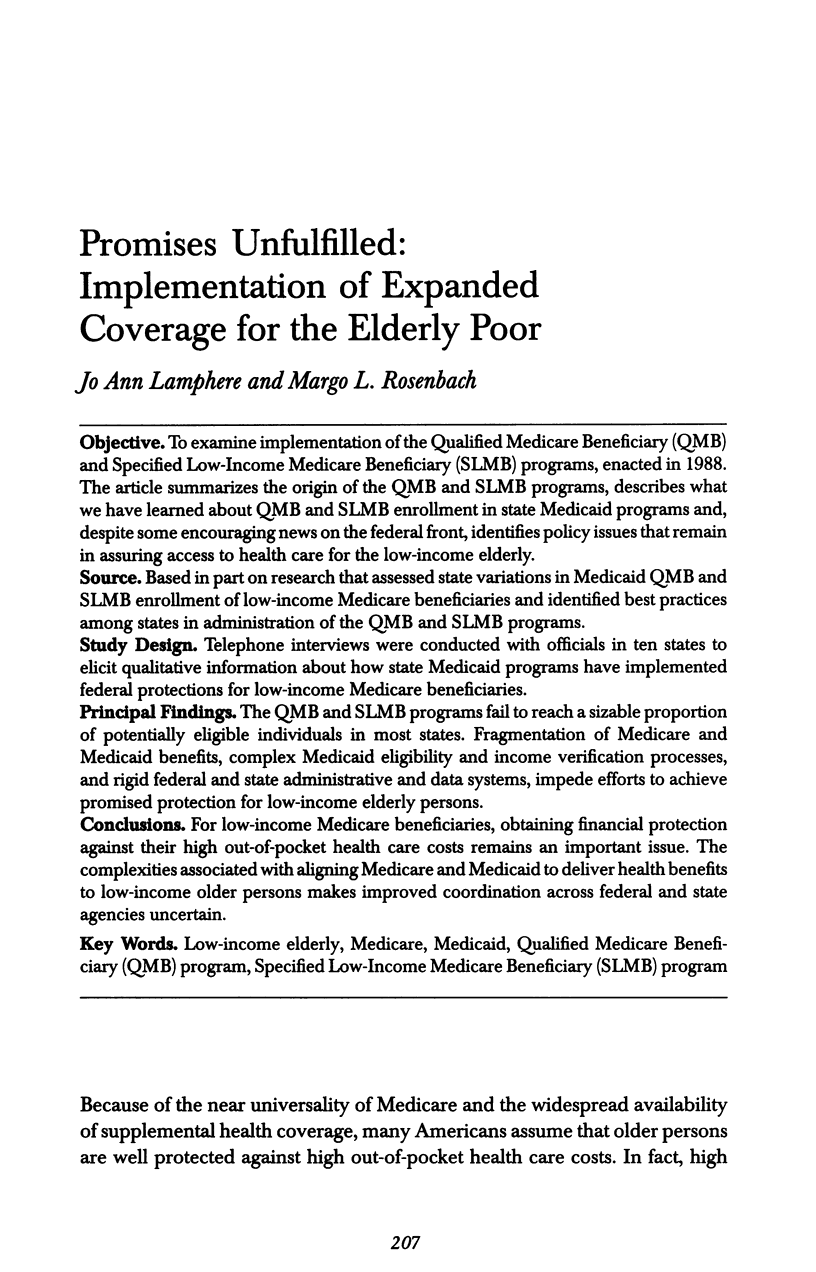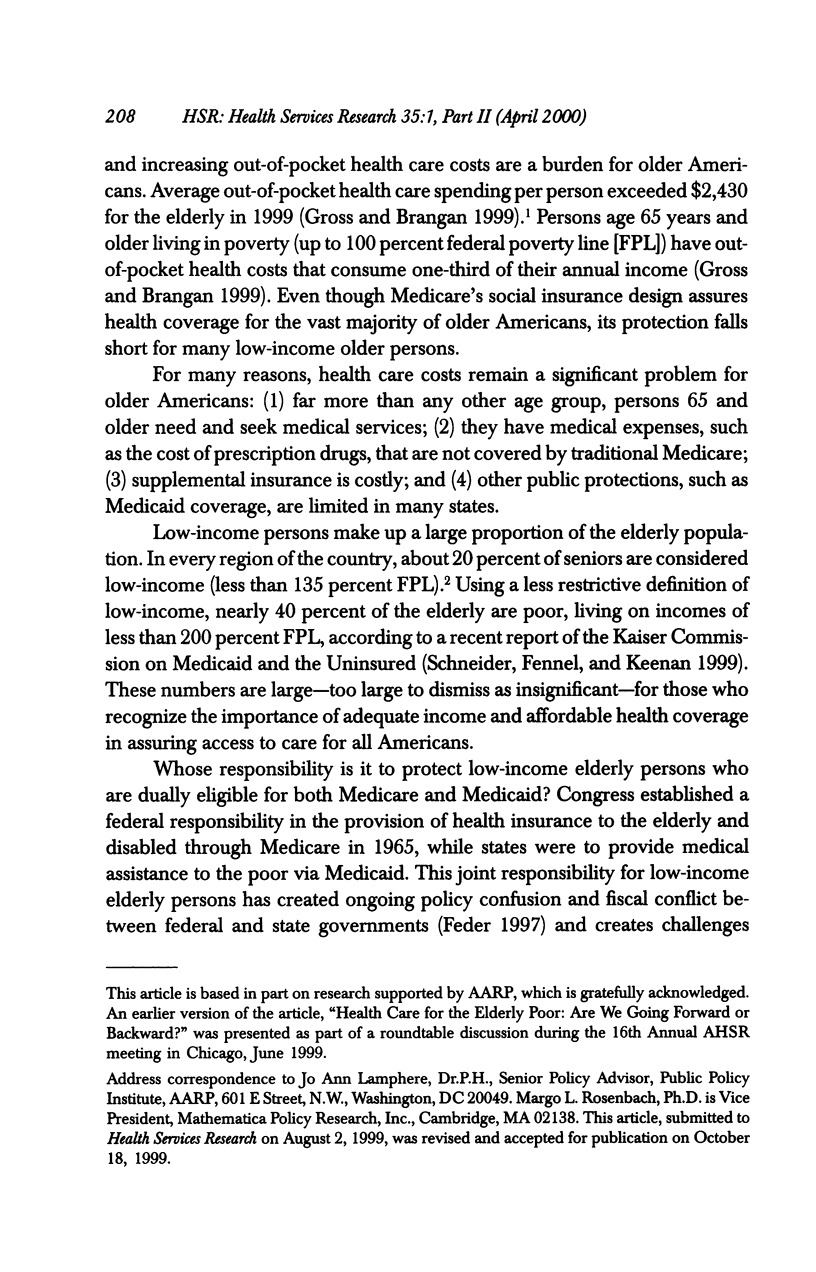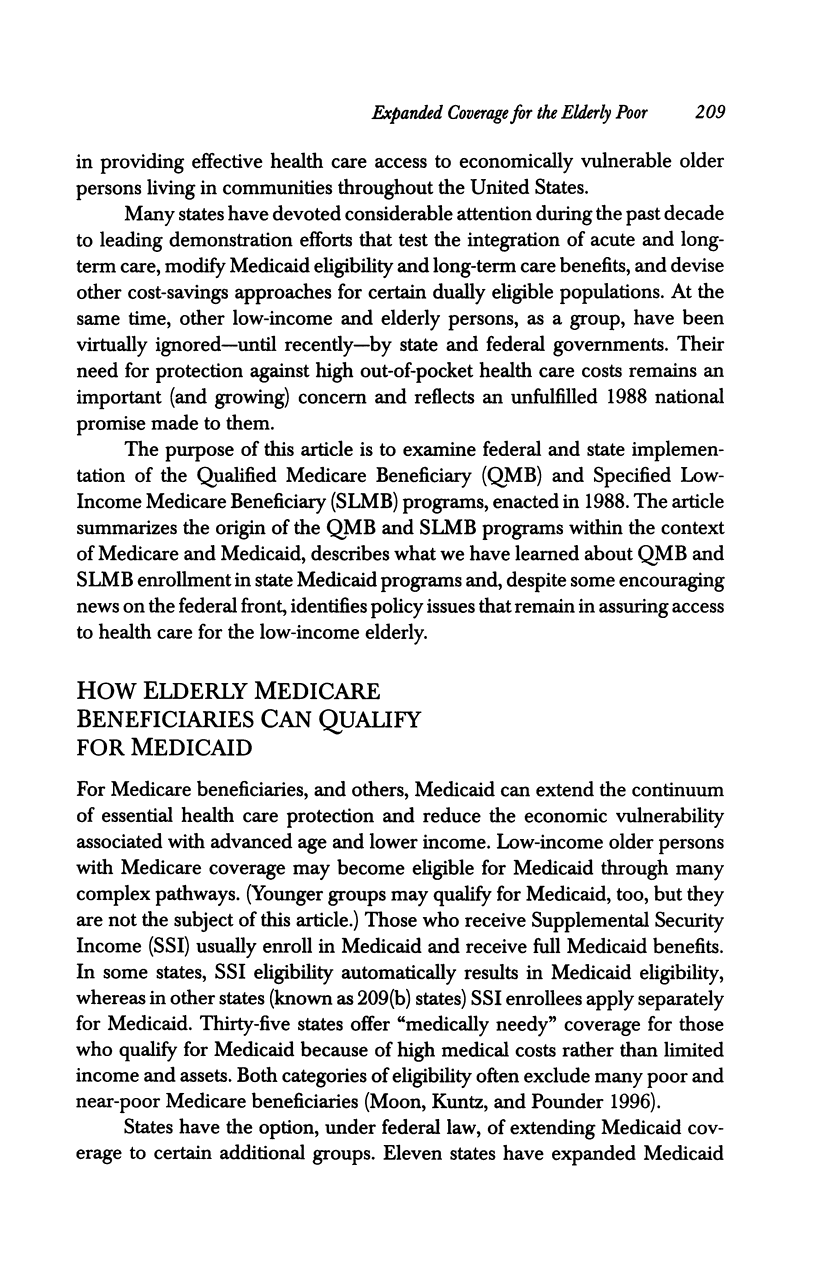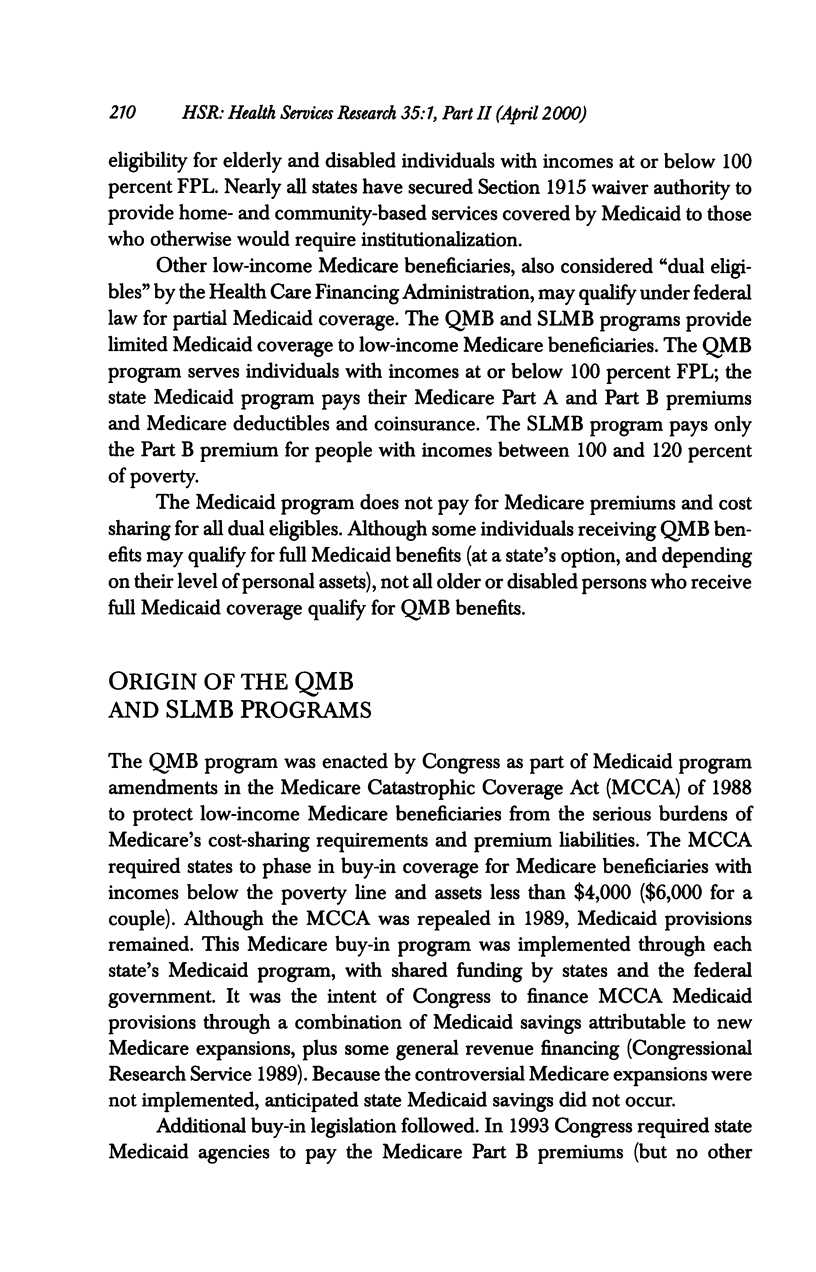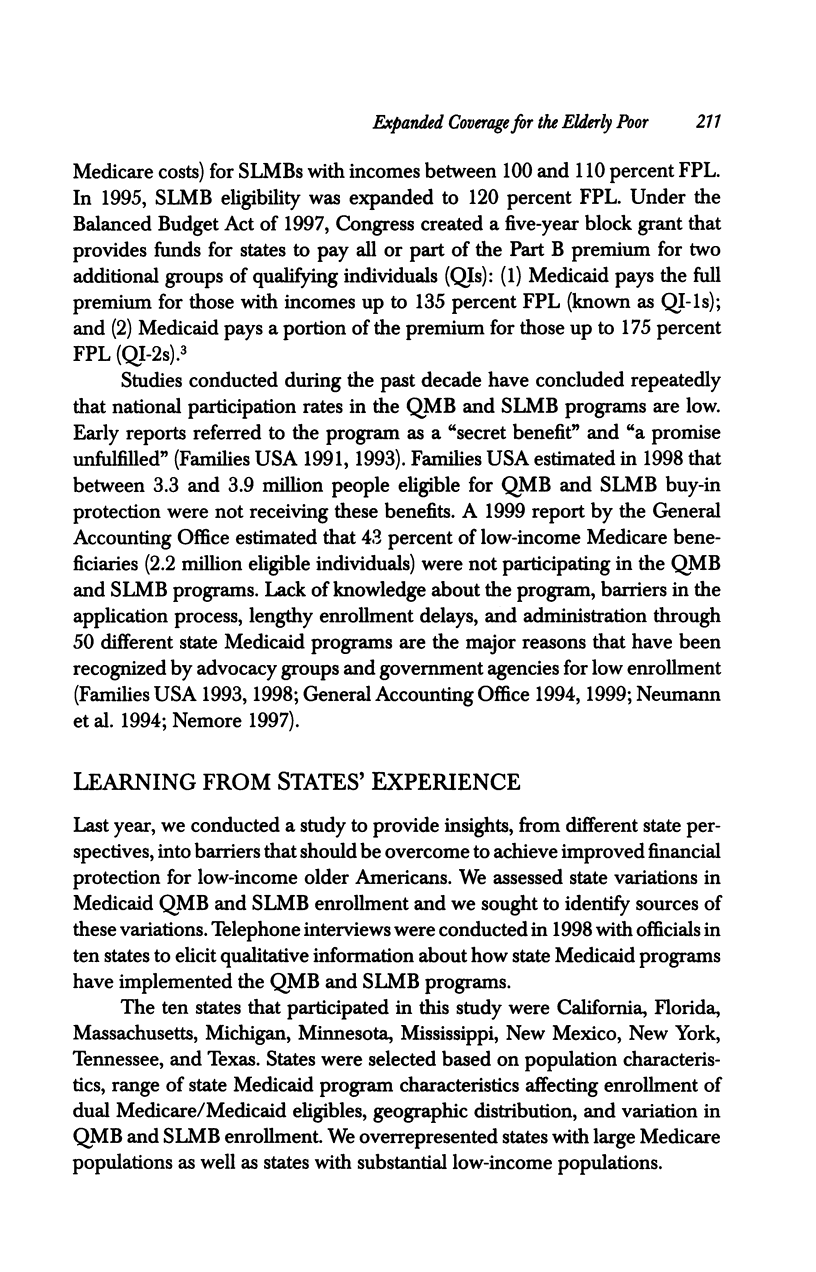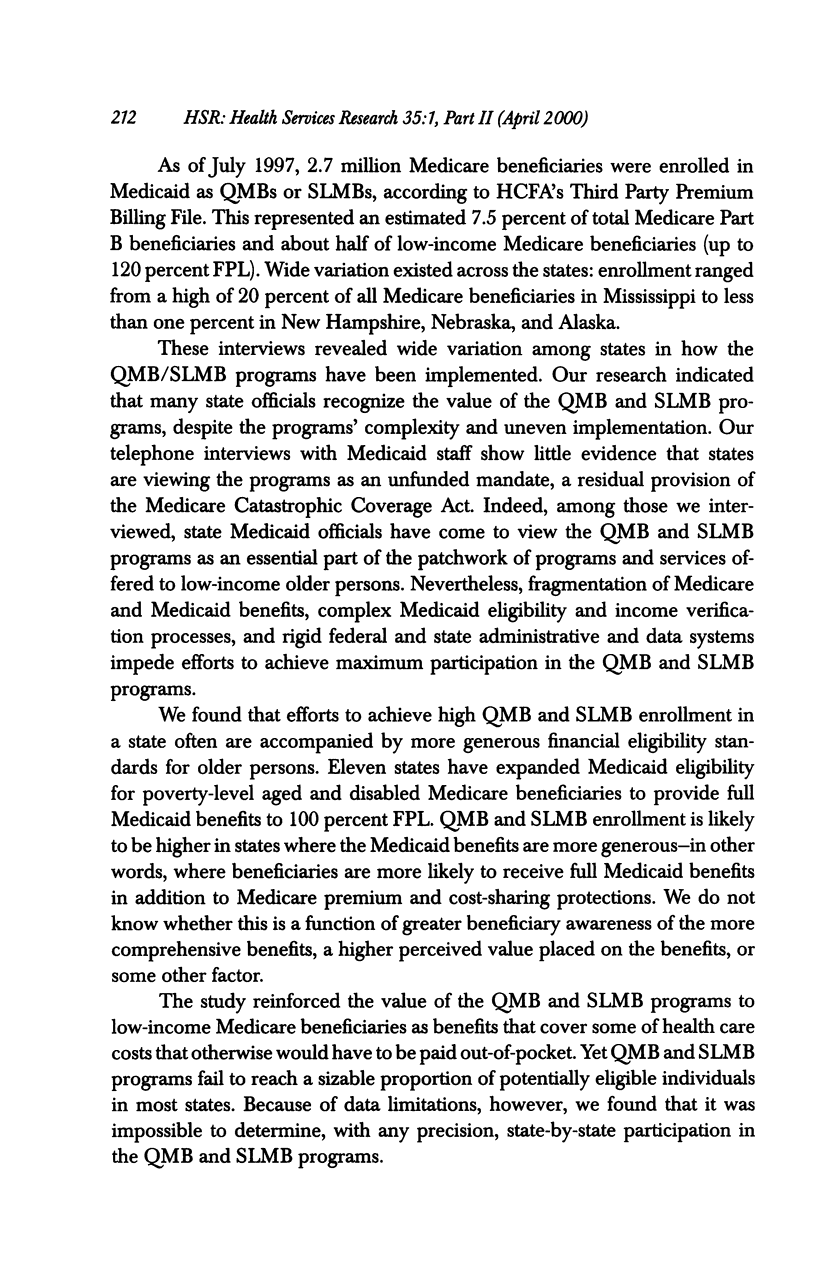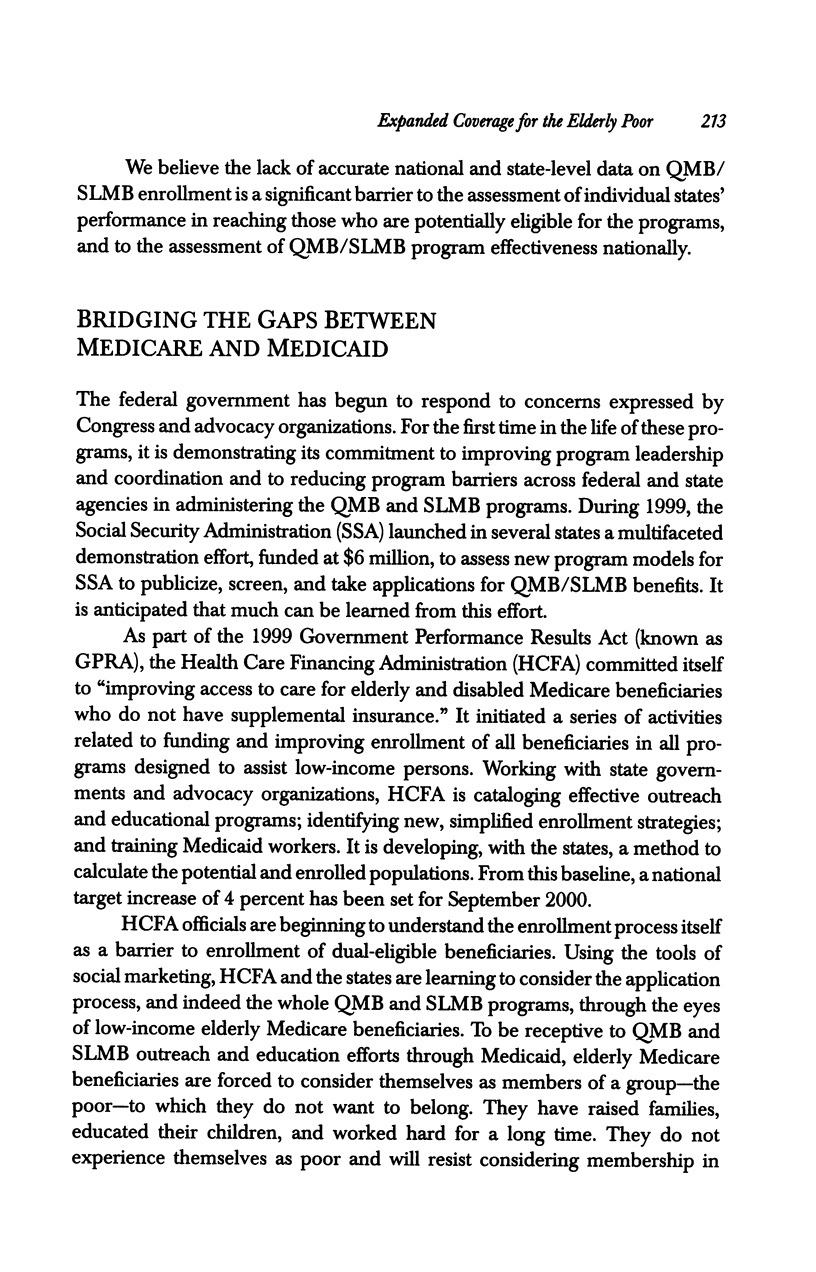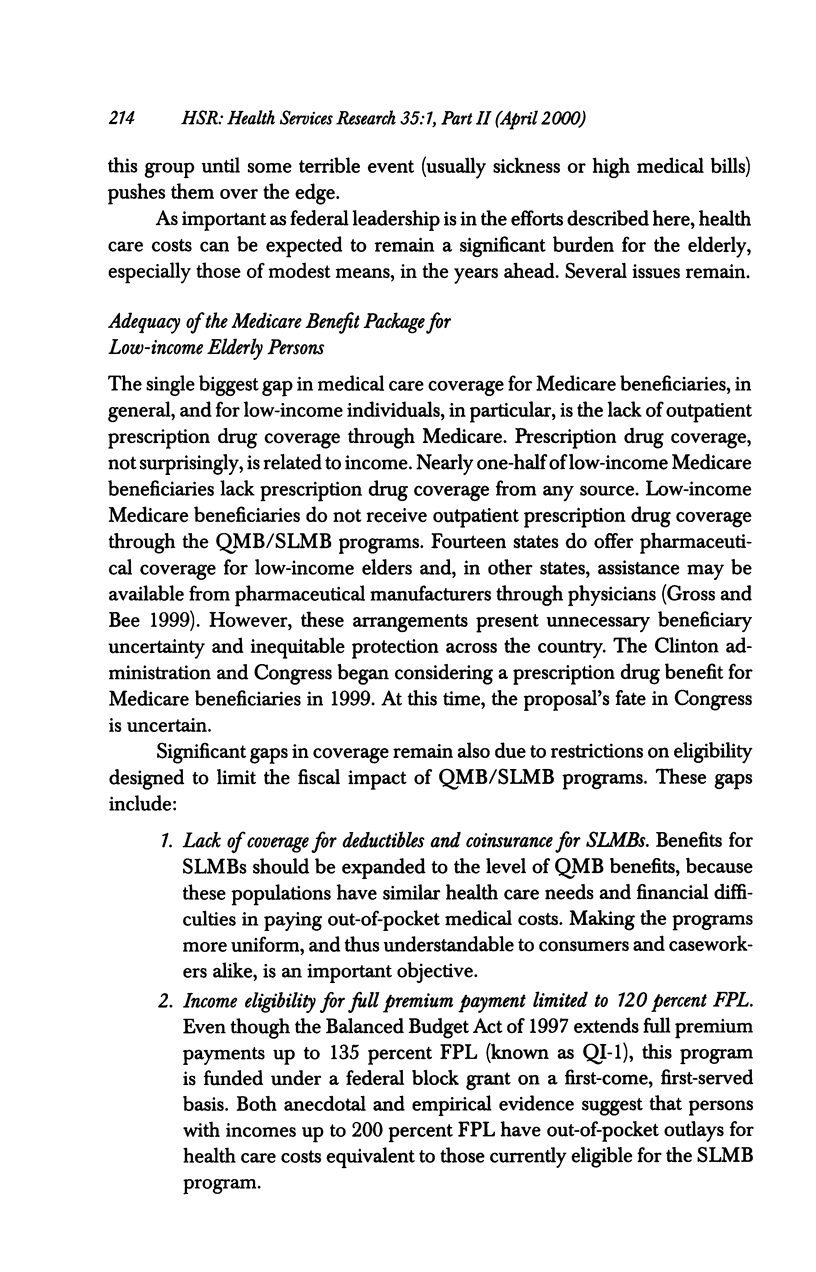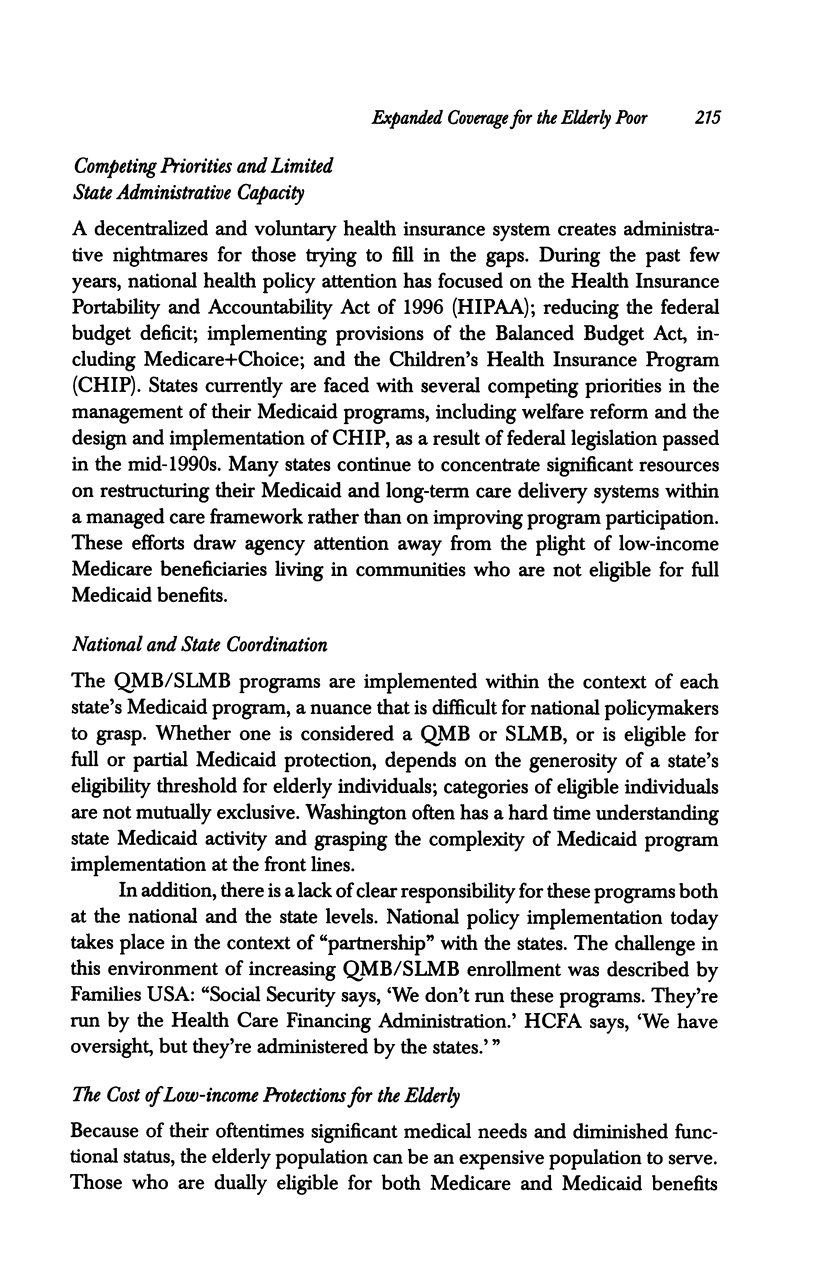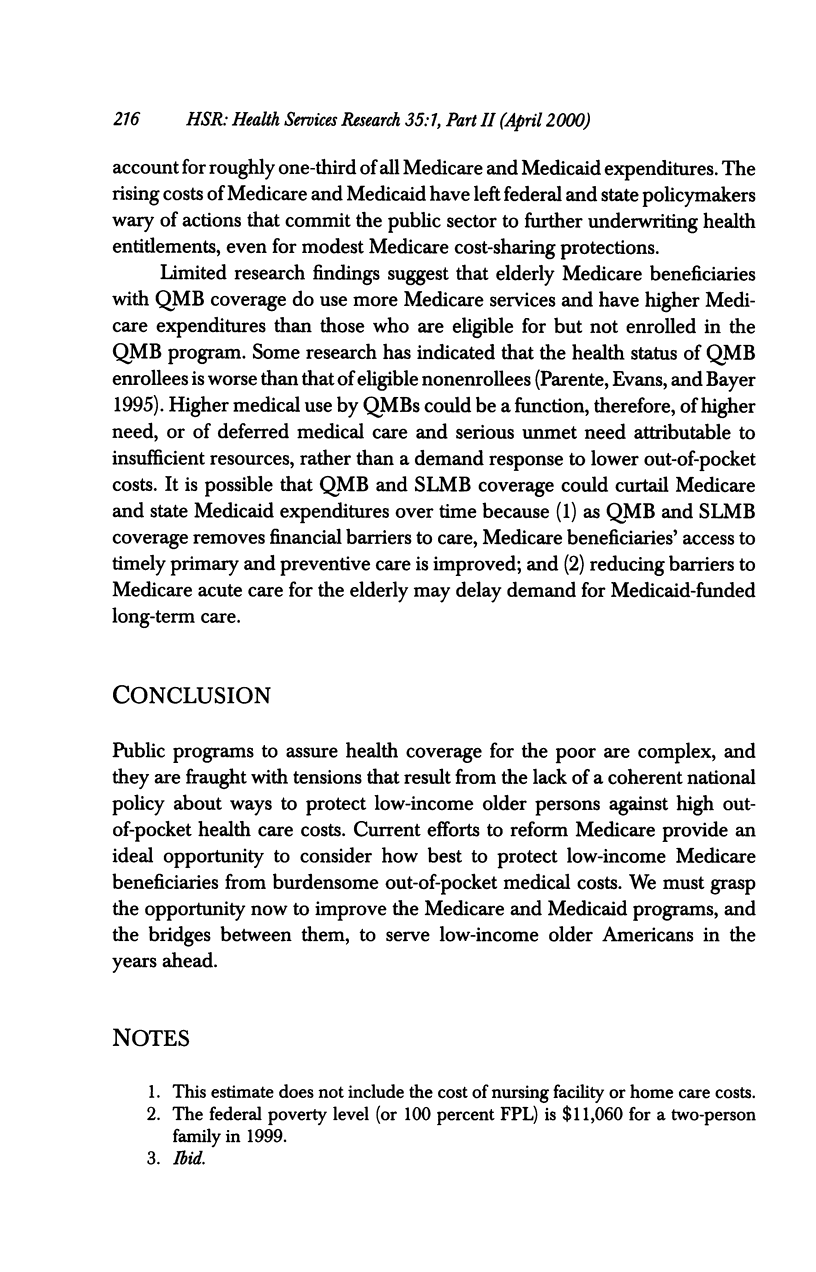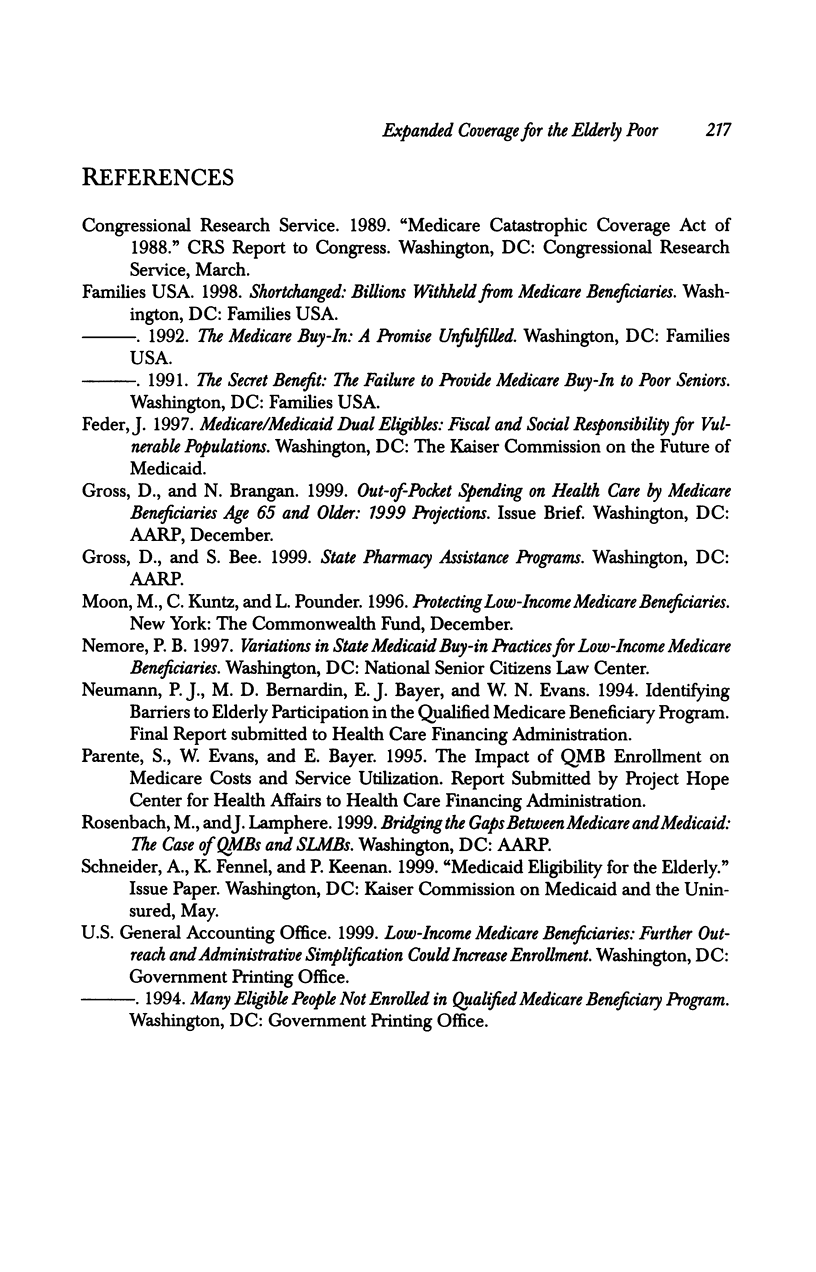Abstract
OBJECTIVE: To examine implementation of the Qualified Medicare Beneficiary (QMB) and Specified Low-Income Medicare Beneficiary (SLMB) programs, enacted in 1988. The article summarizes the origin of the QMB and SLMB programs, describes what we have learned about QMB and SLMB enrollment in state Medicaid programs and, despite some encouraging news on the federal front, identifies policy issues that remain in assuring access to health care for the low-income elderly. SOURCE: Based in part on research that assessed state variations in Medicaid QMB and SLMB enrollment of low-income Medicare beneficiaries and identified best practices among states in administration of the QMB and SLMB programs. STUDY DESIGN: Telephone interviews were conducted with officials in ten states to elicit qualitative information about how state Medicaid programs have implemented federal protections for low-income Medicare beneficiaries. PRINCIPAL FINDINGS: The QMB and SLMB programs fail to reach a sizable proportion of potentially eligible individuals in most states. Fragmentation of Medicare and Medicaid benefits, complex Medicaid eligibility and income verification processes, and rigid federal and state administrative and data systems, impede efforts to achieve promised protection for low-income elderly persons. CONCLUSIONS: For low-income Medicare beneficiaries, obtaining financial protection against their high out-of-pocket health care costs remains an important issue. The complexities associated with aligning Medicare and Medicaid to deliver health benefits to low-income older persons makes improved coordination across federal and state agencies uncertain.
Full text
PDF